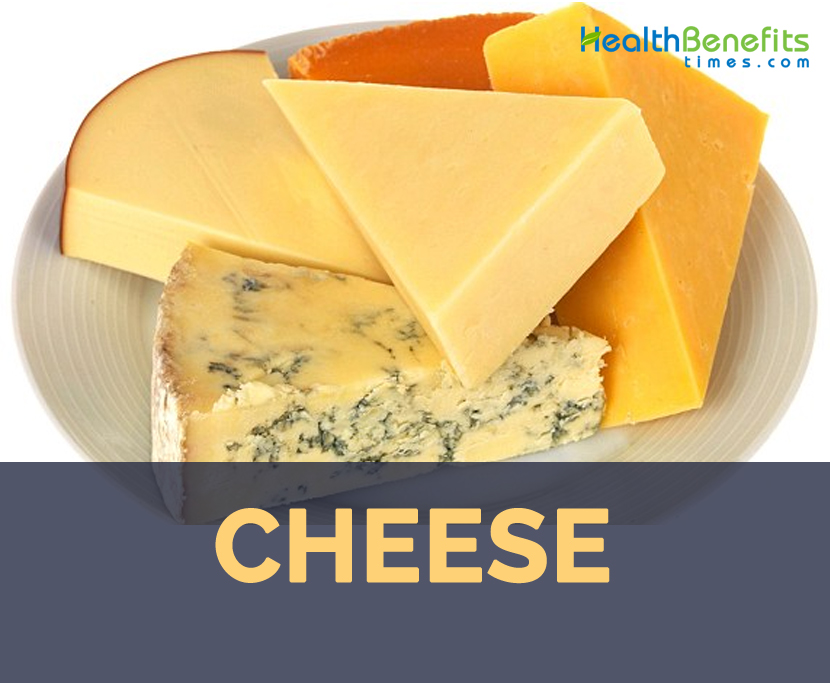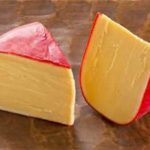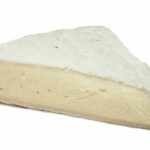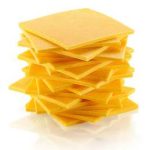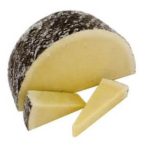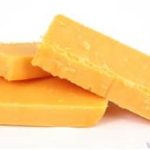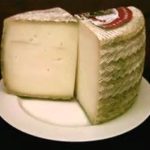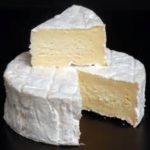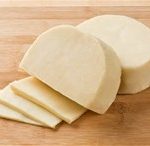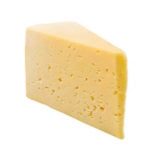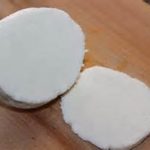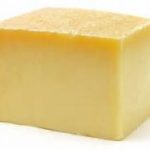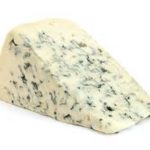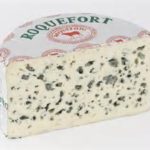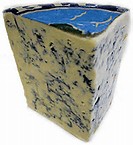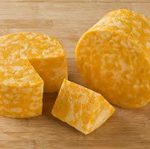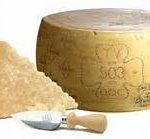| Cheese Quick Facts |
| Name: |
Cheese |
| Shapes |
Shape, textures and flavors depend on the origin of the milk |
| Flesh colors |
Yellow |
| Taste |
Delightful |
| Calories |
535 Kcal./cup |
| Major nutrients |
Selenium (1478.26%)
Phosphorus (227.86%)
Sodium (200.87%)
Calcium (125.90%)
Total Fat (89.60%)
|
| Health benefits |
Dental Care, Bone Health , Osteoporosis, Hypertension, Weight Gain, Heart Health, Stronger muscles,Lower stress, Boost your immune system |
| More facts about Cheese |
Cheese is nutritious food made mostly from the milk of cows but also other mammals, including sheep, goats, buffalo, reindeer, camels and yaks. The word cheese comes from Latin caseus, from which the modern word casein is also derived. The earliest source is from the proto-Indo-European root *kwat-, which means “to ferment, become sour”. Around 4000 years ago people have started to breed animals and process their milk. That’s when the cheese was born.
There are about 4,000 different sorts of cheese worldwide, 1,000 of which come from France alone. It is no wonder that France has a per capita consumption of 25.9 kg cheese per year, putting it ahead of Iceland, Finland and Germany (24.6 kg per person annually). Whether it’s cow’s milk, goat or sheep cheese, there is an almost endless range of varieties, and cheese adds that special something to a great many dishes. Hundreds of types of cheese from various countries are manufactured. Their styles, textures and flavors depend on the origin of the milk (including the animal’s diet), whether they have been pasteurized, the butterfat content, the bacteria and mold, the processing, and aging. Cheese is a delicious and nutritious food that is very versatile. You can add it to other dishes or eat it by itself. It’s convenient and portable.
Health Benefits of Cheese
Cheese contain many nutrients, including vitamins such as vitamin C, B-6, B-12, A, D, E and vitamin K. Other vitamins such as thiamin, riboflavin, niacin are also found in different types of cheese. Consumption of cheese provides certain vital minerals like calcium, sodium, zinc, phosphorus, potassium and iron to the human body. Calcium is one of the nutrients most likely to be lacking in the American diet. According to government statistics, nine out of 10 women and six out of 10 men fall short of calcium recommendations. The high-quality protein in cheese offers the body with essential building blocks for strong muscles. Listed below are few of the health benefits of Cheese:
1. Dental Care
Cheese is the wonderful source of calcium, which is actually extremely important for teeth strength. Additionally, it is super low in lactose content. The older the cheese is, the lower the lactose content is. Also, it is beneficial for the human teeth because any form of sugar (maltose, glucose, or lactose) in food could harm the teeth.
2. Bone Health
Cheese is a dairy product which is high in calcium and good for the bone health. Also, most types of cheese have a higher level of vitamin B, facilitating the human body absorb as well as use the calcium. Pregnant women, young children, lactating moms, and also elderly individuals had better attempt to add cheese in their diets. In other words, cheese could be helpful in warding off osteoporosis – the health problem resulted by a lack of calcium. Particularly, cheese is helpful for people who consumed lactose intolerant and therefore could not drink milk, as it is a wonderful substitute source of calcium.(1)
3. Heart Health
Heart disease is one of the leading causes of death in modern society. Regular consumption of milk products seems to be beneficial for heart health, and may also reduce the risk of hypertension, which is one of the leading causes of heart disease. The experts from Cheese Wedge Co can further explain how this product can be a part of a heart-healthy diet. Cheese contains conjugated linoleic acid (CLA), which is believed to have positive effects on
cholesterol levels and may reduce the risk of heart disease.
Multiple nutritional factors are supposed to be responsible for this effect. This includes the unique combination of calcium, potassium and magnesium found in milk products.
In addition, peptides formed by the digestion of casein, the main family of proteins in cheese, are supposed to be partly responsible. In short, moderate consumption of cheese, as a part of a balanced diet, may protect against heart disease.(2), (3), (4),(5), (6), (7), (8), (9), (10)
4. Osteoporosis
Osteoporosis is actually a deficiency disease which is caused because of calcium deficiency (non-absorption), leading to decrease in bone mineral density. This is mostly seen in women who have undergone menopause, elderly people as well as children who suffer from malnutrition. It can be treated with protein, calcium and a vitamin-rich diet. Calcium alone will not help much, because the problem is with its absorption and its utilization for bone formation. These three components are found in abundance in cheese. Therefore, it can be an ideal part of the diet of those suffering from osteoporosis.
5. Lower stress
If you’ve had a stressful day, reach for a cheese pizza. Cheese consists of tryptophan, an essential amino acid that helps in the production of serotonin, which may have a calming effect by regulating your mood and anxiety levels.(11)
6. Hypertension
Sodium and cholesterol are the two main elements considered harmful for hypertension and hypertensive people are recommended to avoid them. In this way, cheeses are viewed critically. The fat content of the cheese depends very much on the quality of the milk, whether it is full fat or full cream, low fat or fat free. In general, high-fat ones are more popular, since they tend to taste better. But, keeping in view the public demand and health concerns, low-fat cheeses are also being introduced to the market. This means that you need to be choosy while picking cheese for your home and diet.
Sodium content of cheese differs according to the amount of salt added to the milk prior to cheese formation, it is never low enough to be recommended for hypertensive people, as salt is an inevitable part of cheese. In general, it is not recommended for people suffering from hypertension (high blood pressure). Although low sodium and low fat cheese is helpful in decreasing homocysteine, an agent which is often associated with heart diseases, this fact still does not make it recommendable for hypertensive people.
7. Weight Gain
Cheese is an excellent food for gaining weight. It is full of proteins, fats, calcium, vitamins and minerals. Protein is quite essential for muscle formation and growth, fats for fat-based processes in the body, calcium for heavier and stronger bones and vitamins and minerals for improved metabolic function. You just need to eat a lot of them, do your exercise and sleep an adequate amount.
8. Stronger muscles
If you are a fan of cheese then you’ll be happy to know cheese can be good for you (in moderation, of course). There are numerous benefits you may not be aware of. A 2013 research discovered organic dairy has about 62% more healthy omega-3 fatty acids than regular milk. And you’ll be hard-pressed to run out of cheeses to choose from; there are more than 3,000 different types of cheese made around the globe, according to chef and author Georgeanne Brennan.
9. Boost your immune system
Certain types of cheese, like Blue, Swiss, and Cheddar cheese, are packed with selenium, an antioxidant which plays an important role in the immune system. Moreover, the B vitamins in the cheese help maintain body functions and boosts immunity.
10. Other Benefits
Cheese contains conjugated linoleic acid and sphingolipids which help prevent cancer. It contains a lot of vitamin-B which develops in it during the fermentation process. Vitamin-B is very good for maintaining many functions in the body and also for protection against diseases like Beriberi. It also improves blood formation, strengthens the liver, and facilitates the absorption of nutrients in the body.
History of Cheese
According to ancient records passed down through the centuries, the making of cheese dates back more than 4,000 years.
No one really knows who made the first cheese. According to an ancient legend, it was made accidentally by an Arabian merchant who put his supply of milk into a pouch made from a sheep’s stomach, as he set out on a day’s journey across the desert. The rennet in the lining of the pouch, combined with the heat of the sun, caused the milk to separate into curd and whey. That night he found that the whey fulfilled his thirst, and the cheese (curd) had a wonderful flavor which satisfied his hunger.
Travelers from Asia are supposed to have brought the art of cheese making to Europe. In fact, cheese was made in many parts of the Roman Empire when it was at its height. The Romans, in turn, introduced cheese making to England. During the middle Ages-from the decline of the Roman Empire until the discovery of America-cheese was made and improved by the monks in the monasteries of Europe. For example, Gorgonzola was made in the Po Valley in Italy in 879 A.D., and Italy became the cheese making center of Europe during the 10th Century. Roquefort was also stated in the ancient records of the monastery at Conques, France as early as 1070.
Cheese making continued to flourish in Europe and became an established food. In fact, the Pilgrims included cheese in the Mayflower’s supplies when they made their voyage to America in 1620. The making of cheese rapidly spread in the New World, but until the 19th century it remained a local farm industry. It wasn’t till 1851 that the first cheese factory in the United States was built by Jesse Williams in Oneida County, New York.
As population across the United States continued to grow intensely, the demand for cheese increased and the industry slowly moved westward, centering on the rich farm lands of Wisconsin. In 1845, a band of Swiss immigrants settled in Green County, Wisconsin and started the manufacturing of foreign cheese in America. Most Wisconsin farmers began to believe that their future survival was tied to cheese and their first factory was a Limburger plant which opened in 1868.
The wholesale cheese industry was thus born and displayed remarkable growth during the latter half of the 1800s. By 1880 there were 3,923 dairy factories countrywide which were reported to have made 216 million pounds of cheese that year valued at $17 million. This represented nearly 90 percent of total cheese production that year. By the turn of the century, farm production of cheese had become insignificant. The 1904 census reported only factory output, which totaled over 317 million pounds. As cheese demand continued to grow and spread rapidly, manufactured and processed cheese production increased dramatically. Total natural cheese production grew from 418 million pounds in 1920 to 2.2 billion pounds by 1970. Rising demand for cheese throughout the 1970s and 1980s brought total natural cheese production to more than 6 billion pounds by the beginning of the 1990s. Processed cheese also experienced a surge in consumer demand with annual production exceeding 2 billion pounds a year by the beginning of the 1990s.
Presently, more than one-third of all milk produced each year in the U.S. is used to manufacture cheese. Recent increases in the overall demand for farm milk have in large part been due to the continued growth of the cheese industry. As consumer appetites for all types of cheese continue to expand, so will the industry.
Nutritional Value
Apart from their delightful taste, cheese is a good source of nutrients, vitamins and minerals. Consuming 224 gram of cheese offers 34 mg of Selenium, 1595 mg of Phosphorus, 3013 mg of Sodium, 1259 mg of Calcium, 31.36 g of Total Fat, 37.41 g of Protein, 0.963 mg of Vitamin B2, 5.8 mg of Zinc and 0.9 µg of Vitamin B-12.
Types of Cheese
1. Gouda
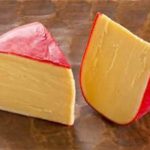 Gouda, or “How-da” as the locals say, is actually a Dutch cheese named after the city of Gouda in the Netherlands. If truth be told, it is one of the most popular cheeses in the world, accounting for 50 to 60 percent of the world’s cheese consumption. It is a semi-hard cheese celebrated for its rich, unique flavor and smooth texture. Gouda is one of the last standing commercial cheese markets in the Netherlands. Since the name is not protected, it has become a generic classification for all cheeses produced and sold under the name Gouda.
Gouda, or “How-da” as the locals say, is actually a Dutch cheese named after the city of Gouda in the Netherlands. If truth be told, it is one of the most popular cheeses in the world, accounting for 50 to 60 percent of the world’s cheese consumption. It is a semi-hard cheese celebrated for its rich, unique flavor and smooth texture. Gouda is one of the last standing commercial cheese markets in the Netherlands. Since the name is not protected, it has become a generic classification for all cheeses produced and sold under the name Gouda.
2. Brie
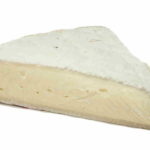 Brie is the best known French cheese and has a nickname “The Queen of Cheeses”. Brie is a soft cheese named after the French region Brie, where it was originally made. Brie cheese is slightly pale in color with a greyish tinge under a rind. Its flavor differs depending upon the ingredients added while producing the cheese.
Brie is the best known French cheese and has a nickname “The Queen of Cheeses”. Brie is a soft cheese named after the French region Brie, where it was originally made. Brie cheese is slightly pale in color with a greyish tinge under a rind. Its flavor differs depending upon the ingredients added while producing the cheese.
3. American cheese
 American cheese is actually a processed cheese made from a mixture of milk, milk fats and solids, with other fats and whey protein concentrates. At first it was made from a mixture of cheeses, more often than not Colby and Cheddar. Since blended cheeses are no longer used, it cannot be legally called “cheese” and has to be labeled as “processed cheese”, “cheese product“, etc. Sometimes, instead of the word cheese, it is called as “American slices” or “American singles”. Under the U.S. Code of Federal Regulations, American cheese is a kind of pasteurized processed cheese.
American cheese is actually a processed cheese made from a mixture of milk, milk fats and solids, with other fats and whey protein concentrates. At first it was made from a mixture of cheeses, more often than not Colby and Cheddar. Since blended cheeses are no longer used, it cannot be legally called “cheese” and has to be labeled as “processed cheese”, “cheese product“, etc. Sometimes, instead of the word cheese, it is called as “American slices” or “American singles”. Under the U.S. Code of Federal Regulations, American cheese is a kind of pasteurized processed cheese.
4. Pecorino Romano
 Pecorino is an Italian cheeses made from 100% sheep’s milk. However, the American counterpart of the cheese is made from cow’s milk. Pecorino Romano is one of most extensively used, sharper alternatives to Parmesan cheeses. Because of the hard texture as well as sharp & salty taste, Pecorino Romano is an outstanding grating cheese over pasta dishes, breads and baking casseroles. Though, the use of the cheese is limited because of its extreme saltiness. Pair it with a glass of big, bold Italian red wine or a light beer.
Pecorino is an Italian cheeses made from 100% sheep’s milk. However, the American counterpart of the cheese is made from cow’s milk. Pecorino Romano is one of most extensively used, sharper alternatives to Parmesan cheeses. Because of the hard texture as well as sharp & salty taste, Pecorino Romano is an outstanding grating cheese over pasta dishes, breads and baking casseroles. Though, the use of the cheese is limited because of its extreme saltiness. Pair it with a glass of big, bold Italian red wine or a light beer.
5. Cheddar
 During olden days, England was the only place where Cheddar cheeses were made. However, many countries all over the world manufacture Cheddar today. Cheddar cheese, the most widely purchased and eaten cheese in the world is always made from cow’s milk. It is a hard and natural cheese that has a slightly crumbly texture if properly cured and if it is too young, the texture is smooth. It gets a sharper taste as it matures, over a period of time between 9 to 24 months. Shaped like a drum, 15 inches in diameter, Cheddar cheese is natural rind bound in cloth while its color generally ranges from white to pale yellow.
During olden days, England was the only place where Cheddar cheeses were made. However, many countries all over the world manufacture Cheddar today. Cheddar cheese, the most widely purchased and eaten cheese in the world is always made from cow’s milk. It is a hard and natural cheese that has a slightly crumbly texture if properly cured and if it is too young, the texture is smooth. It gets a sharper taste as it matures, over a period of time between 9 to 24 months. Shaped like a drum, 15 inches in diameter, Cheddar cheese is natural rind bound in cloth while its color generally ranges from white to pale yellow.
6. Manchego
 Manchego is produced in the La Mancha region of Spain, which is also home to Don Quixote. It is made from unpasteurized sheep’s milk. It is one of the popular cheeses from Spain, made from sheep’s milk. It also comes under the PDO guidelines.
Manchego is produced in the La Mancha region of Spain, which is also home to Don Quixote. It is made from unpasteurized sheep’s milk. It is one of the popular cheeses from Spain, made from sheep’s milk. It also comes under the PDO guidelines.
7. Camembert
 Marie Harel created the original Camembert cheese from raw milk in Normandy, France in 1791. Today, however, a very small percentage of producers make cheese from raw milk with the same process as Marie Harel would have used. The fresh Camembert cheese is tasteless, hard and crumbly in texture. Young Camembert has a milky and sweet taste. As the cheese matures it forms a smooth, runny interior and a white bloomy rind that is typical to Camenbert cheese. It has a rich, buttery flavor.
Marie Harel created the original Camembert cheese from raw milk in Normandy, France in 1791. Today, however, a very small percentage of producers make cheese from raw milk with the same process as Marie Harel would have used. The fresh Camembert cheese is tasteless, hard and crumbly in texture. Young Camembert has a milky and sweet taste. As the cheese matures it forms a smooth, runny interior and a white bloomy rind that is typical to Camenbert cheese. It has a rich, buttery flavor.
8. Provolone
 Provolone is an Italian cheese made from cow’s milk whose origins lie in Southern Italy. Today, the major production of Provolone takes place in Po valley region, mainly Lombardy and Veneto. Provolone cheese is also classified into two forms: Provolone Dolce, which is aged for 2-3 months, has a pale yellow to white color and sweet taste. The other, Provolone Piccante is aged for more than four months and has a sharper taste.
Provolone is an Italian cheese made from cow’s milk whose origins lie in Southern Italy. Today, the major production of Provolone takes place in Po valley region, mainly Lombardy and Veneto. Provolone cheese is also classified into two forms: Provolone Dolce, which is aged for 2-3 months, has a pale yellow to white color and sweet taste. The other, Provolone Piccante is aged for more than four months and has a sharper taste.
9. Parmesan
 Parmigiano Reggiano or Parmesan cheese as it is called in English is considered to be among the top cheeses by cheese specialists. Today, it is produced by various producers. True Parmesan cheese has a hard, gritty texture and is fruity and nutty in taste. Cheeses mocking Parmesan or inferior Parmesan may have a bitter taste. Parmigiano Reggiano cheese is mostly grated over pastas, used in soups and risottos. It is also eaten on its own as a snack.
Parmigiano Reggiano or Parmesan cheese as it is called in English is considered to be among the top cheeses by cheese specialists. Today, it is produced by various producers. True Parmesan cheese has a hard, gritty texture and is fruity and nutty in taste. Cheeses mocking Parmesan or inferior Parmesan may have a bitter taste. Parmigiano Reggiano cheese is mostly grated over pastas, used in soups and risottos. It is also eaten on its own as a snack.
10. Mozzarella
 Mozzarella cheese is a sliceable curd cheese originating in Italy. Traditional Mozzarella cheese is made from milk of water buffalos herded in very few countries such as Italy and Bulgaria. As a result, most of the Mozzarella cheeses available now are made from cow’s milk. Fresh Mozzarella cheese is one of those easy-to-make-at-home cheeses used while making variety of recipes, including salads, meats, seafood, and vegetables.
Mozzarella cheese is a sliceable curd cheese originating in Italy. Traditional Mozzarella cheese is made from milk of water buffalos herded in very few countries such as Italy and Bulgaria. As a result, most of the Mozzarella cheeses available now are made from cow’s milk. Fresh Mozzarella cheese is one of those easy-to-make-at-home cheeses used while making variety of recipes, including salads, meats, seafood, and vegetables.
11. Gruyere
 Gruyere is named after a Swiss village. It is a traditional, creamery, unpasteurized, semi-soft cheese. The natural, rusty brown rind is hard, dry and pitted with tiny holes. The cheese is darker yellow than Emmental but the texture is more dense and compact. Slightly grainy, the cheese has a wonderful complexity of flavors – at first fruity, later becomes more earthy and nutty.
Gruyere is named after a Swiss village. It is a traditional, creamery, unpasteurized, semi-soft cheese. The natural, rusty brown rind is hard, dry and pitted with tiny holes. The cheese is darker yellow than Emmental but the texture is more dense and compact. Slightly grainy, the cheese has a wonderful complexity of flavors – at first fruity, later becomes more earthy and nutty.
12. Gorgonzola
 Gorgonzola is one of the world’s oldest blue-veined cheeses. The Cheese is mainly produced in the northern Italian regions of Piedmont and Lombardy, Gorgonzola. Unskimmed cow’s milk is used while preparing the cheese. Generally it takes three to four months to attain full ripeness.
Gorgonzola is one of the world’s oldest blue-veined cheeses. The Cheese is mainly produced in the northern Italian regions of Piedmont and Lombardy, Gorgonzola. Unskimmed cow’s milk is used while preparing the cheese. Generally it takes three to four months to attain full ripeness.
13. Roquefort
 Roquefort is a popular French cheese, reported to be a favorite of Emperor Charlemagne. In France, it is called the ‘cheese of kings and popes’. Roquefort cheese is moist and breaks into little pieces easily. Genuine Roquefort is rich, creamy and sharp, tangy, salty in flavor. It is aged for 5 months. It is also mostly used in salads and dressings.
Roquefort is a popular French cheese, reported to be a favorite of Emperor Charlemagne. In France, it is called the ‘cheese of kings and popes’. Roquefort cheese is moist and breaks into little pieces easily. Genuine Roquefort is rich, creamy and sharp, tangy, salty in flavor. It is aged for 5 months. It is also mostly used in salads and dressings.
14. Blue Vein Cheese
 Blue Vein cheeses also known as Blue cheese is a generic term used to describe cheese produced with cow’s milk, sheep’s milk, or goat’s milk and ripened with cultures of the mold Penicillium. The final product is characterized by green, grey, blue or black veins or spots of mold throughout the body. These veins are created during the production stage when cheese is ‘spiked’ with stainless steel rods to let oxygen circulate and encourage the growth of the mold. This process also softens the texture and develops the distinctive blue flavor.
Blue Vein cheeses also known as Blue cheese is a generic term used to describe cheese produced with cow’s milk, sheep’s milk, or goat’s milk and ripened with cultures of the mold Penicillium. The final product is characterized by green, grey, blue or black veins or spots of mold throughout the body. These veins are created during the production stage when cheese is ‘spiked’ with stainless steel rods to let oxygen circulate and encourage the growth of the mold. This process also softens the texture and develops the distinctive blue flavor.
15. Colby-Jack
 Colby Jack or Cojack is a classic American combination of Colby and Monterey Jack cheese. The cheese was invented when Colby and Monterey Jack were combined together before pressing. A semi-soft cheese, it shows a unique eye-appealing marbled white and orange exterior that makes it a fun snack to eat on-the-go.
Colby Jack or Cojack is a classic American combination of Colby and Monterey Jack cheese. The cheese was invented when Colby and Monterey Jack were combined together before pressing. A semi-soft cheese, it shows a unique eye-appealing marbled white and orange exterior that makes it a fun snack to eat on-the-go.
16. Zanetti Parmigiano Reggiano
 Zanetti Parmigiano Reggiano also known as Parmesans (in English), is the King of Parmesans, one of Italy’s finest products. Cheese produced only in the provinces of Parma, Reggio Emilia, Modena, and Bologna to the west of the Reno River and Mantua to the east of the Po River is assigned the D.O.P tag. With its rich, nutty taste and distinctive aroma, it is used by the finest chefs in food preparation. But it is equally delightful to eat with fruit, crackers and wine or sprinkled on pasta, rice or soup.
Zanetti Parmigiano Reggiano also known as Parmesans (in English), is the King of Parmesans, one of Italy’s finest products. Cheese produced only in the provinces of Parma, Reggio Emilia, Modena, and Bologna to the west of the Reno River and Mantua to the east of the Po River is assigned the D.O.P tag. With its rich, nutty taste and distinctive aroma, it is used by the finest chefs in food preparation. But it is equally delightful to eat with fruit, crackers and wine or sprinkled on pasta, rice or soup.
And Many More….
Tips for storage
- For most cheeses, plastic wrap protects it from moisture, odors and mould. Wrap your cheese tightly so it doesn’t dry out.
- Store your cheeses in the lower shelf of your refrigerator, away from foods with strong odors.
- Store feta and bocconcini in its brine in the fridge.
How is cheese made?
All cheeses are made by starting off with milk as a base ingredient, and then using some variation of the following four steps: curdling, draining, moulding, ageing.
Curdling
Once the milk has been prepared, the solid parts (curds) are separated from the liquid (whey) through a process called ‘curdling’. Depending on the type of cheese being made this is done by adding a lactic starter, rennet, or in some cases, both. For fresh and soft cheeses like Ma Cremiere Brie lemon juice, vinegar or bacteria is added, whereas for harder cheese such as Cheddar an enzyme known as ‘rennet’ is used.
Draining
Draining stage involves further removing the whey content in order to achieve the required moisture. This is done in a variety of ways, from allowing the whey to filter through the grains of curd for several hours, to kneading, cutting, mixing, heating and stretching, as is the case for pulled cheeses like Mozzarella. Draining is the most conclusive of the cheese making processes, as it is whilst the curd rests that acidity and bacteria levels increase and the flavor of the individual cheese types begin to develop.
Moulding & pressing
Important for forming the shape of the cheese, pressing is usually reserved for hard and semi-hard cheeses, though semi-soft cheeses are also lightly pressed. Salt is then added, which acts as an antiseptic and contributes to skin or rind formation and flavoring. The cheese can then be waxed and sealed, washed in water, alcohol or brine, covered with wood ashes, herbs or oil, or smoked, like Port Salut.
Ripening
During the ageing, or ‘ripening’, process, the constituents of milk are further broken down to produce the required flavor, texture and aroma of a particular cheese. This highly delicate procedure needs an environment in which moisture, temperature and oxygen are controlled to promote maturation. There are two principal ageing methods that can be used:
- Non-surface ripening begins and continues from the inside of the cheese outwards. The cheese is then sealed or coated in wax to prevent oxygen from reacting with the surface of the cheese.
- Surface ripening begins on the outside of the cheese, progressing inwards. Micro-organisms are added to the surface of the cheese to promote skin or rind formation.
Precautions
Though cheese consumption is both healthy and safe, certain individuals may need to be careful with (or avoid) cheese.
Lactose Intolerance
Lactose, also called milk sugar, is the main carbohydrate found in milk products.
Some people are not capable to fully digest lactose, a condition known as lactose intolerance, which is allied with gas, diarrhea and other adverse symptoms.
Fresh cheese like cottage cheese and cream cheese generally contains a fair amount of lactose, whereas well ripened, aged cheese contains very low amounts.
People with lactose intolerance can often eat aged cheese in moderate amounts without problems, but may need to avoid fresh types of cheese.
Milk Allergy
Milk allergy is actually a rare condition, more common among children than adults.
The primary allergens in milk are proteins, whey and casein. Casein is the main type of protein in cheese, but it often consists of trace amounts of whey. Being a rich source of milk proteins, cheese should be avoided by those with milk allergy.
References:
https://en.wikipedia.org/wiki/Cheese
http://www.healthyeating.org/Milk-Dairy/Nutrients-in-Milk-Cheese-Yogurt/Nutrients-in-Cheese.aspx
https://extension.purdue.edu/4h/Documents/CDE/Facts%20about%20Cheese-DMI.pdf
http://www.eatrightontario.ca/en/Articles/Cooking/Food-Preparation/All-about-cheese.aspx
http://www.bidvest.co.uk/all-about-cheese
http://www.healthyeating.org/Healthy-Eating/All-Star-Foods/Milk-Dairy/Article-Viewer/Article/82/health-benefits-of-cheese.aspx
Comments
comments


